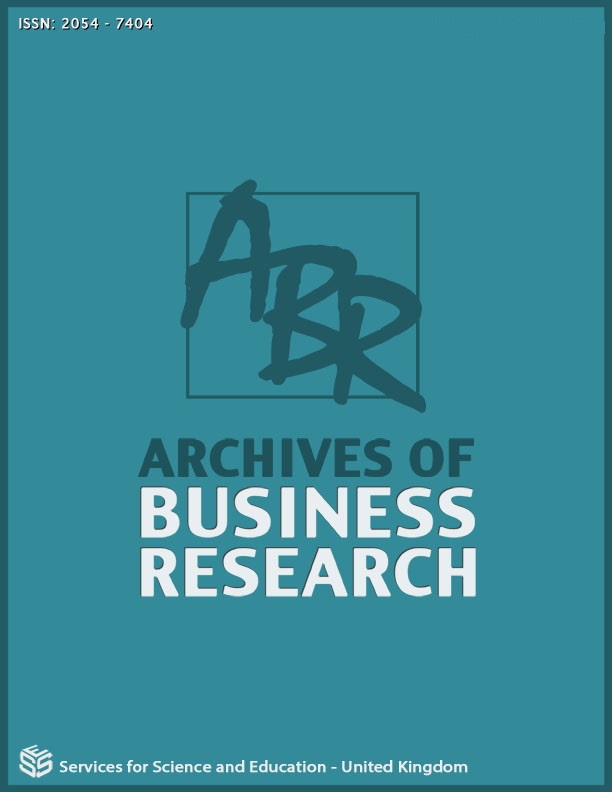Business Process Diagnosis of "BUMDES" Based on Tourism Value Chain (A Case of Petarangan Tourism Village)
DOI:
https://doi.org/10.14738/abr.109.13048Keywords:
Tourism Village, Sustainable Tourism Development, Tourism Value Chain, Value Chain, Balance ScorecardAbstract
This study aims to identify business processes and develop a model for strengthening BUMDES in managing tourist villages that are synergized in a value chain with related businesses in tourism villages (a case study in Petarangan Tourism Village, Central Java, Indonesia). This study uses a descriptive method with a quantitative approach to identify BUMDES business processes based on the tourism value chain and develop a model for strengthening tourism village management that is synergized with businesses in a value chain with related businesses in tourist villages. This research was conducted in three stages, namely diagnosis, assessment by conducting tourism value chain analysis conducted by BUMDES, and recommendation. In conducting a tourism value chain analysis, the concept of a balanced scorecard is used. This research found that in general, the role of BUMDES in maintaining the sustainability of the value chain in tourism business activities in the Petarangan Tourism Village is quite good. However, several things such as the quality of tourism human resources who have business knowledge, control over market prices and production costs, and the ability to provide facilities still need to be improved.
References
Blackstock, K. (2005). A critical look at community based tourism. Community Development Journal, 40(1), 39-49. DOI: 10.1093/cdj/bsi005.
Deni, A., Priansa, D. J., Darmo, I. S., Saribanon, E., Riswanto, A., Sumaryadi, S., & Ramdan, A. M. (2020). Organizational competency and innovation capability: The influence of knowledge management on business performance. Quality Access to Success, 21(179), 47–51.
Dong, E., Wang, Y., Morais, D. & Brooks, D. (2013). Segmenting the rural tourism market: The case of Potter County, Pennsylvania, USA. Journal of Vacation Marketing, 19(2), 181-193. DOI:10.1177/1356766712471231
Ferdinand, A. (2006). Metode Penelitian Manajemen: Pedoman Penelitian untuk skripsi, Tesis dan Disertai Ilmu Manajemen. Semarang: Universitas Diponegoro.
Haven‐Tang, C. & Jones, E. (2012). Local leadership for rural tourism development: A case study of Adventa, Monmouthshire, UK. Tourism Management Perspectives, 4, 28-35.
DOI: 10.1016/j.tmp.2012.04.006.
Kemenkomarves & Kemenpar RI. (2021). Pedoman Desa Wisata (2nd ed.). Jakarta: Kemenkomarves & Kemenpar RI. Retrieved from https://www.ciptadesa.com/2021/06/pedoman-desa-wisata.html
Madsen, B. & Zhang, J. (2010). Towards a new framework for accounting and modelling the regional impacts of tourism. Economic Systems Research, 22(4), 313-340. DOI:10.1080/09535314.2010.529067
Manahati, Zebua. (2016). Inspirasi Pengembangan Pariwisata Daerah. Edisi Revisi. Yogyakarta: Deepublish
Martinović, D. S., & Goran Milenković. (2021). Tourism Value Chain Diagnosis. Marseille: The Centre for the Development of Jablanica and Pcinja Districts. Retrieved from http://www.centarzarazvoj.org/dokumenti/sr/2_894_Tourism_Value_Chain_Diagnosis_Study_(EN)_Final.pdf
Miličević, K. (2021). Tourism Value Chain and Sustainability Certification. Marseille: Labelscape Interreg Mediterranean - European Union.
Morales-Zamorano, L. A., Camacho-García, A. L., Bustamante-Valenzuela, A. C., Cuevas-Merecías, I., & Suarez-Hernández, Á. M. (2020). Value chain for agritourism products. Open Agriculture, 5(1), 768–777. https://doi.org/10.1515/opag-2020-0069
M.S. Amerta. (2017). The role of tourism stakeholders at Jasri Tourism Village development, Karangasem Regency. International Journal of Social Sciences and Humanities, 1(2), 20-28, DOI: http://dx.doi.org/10.21744/ijssh.v1i2.32
Nugroho, F.A., Sutono, A., Sopian, T. (2021). The influence of destination attributes on tourists’ length of stay in Kebumen Regency, Central Java. Jurnal Bisnis dan Manajemen, 22(1), 40-50.
OECD-UNWTO-WTO. (2013). Aid for Trade and Value Chains in Tourism. Retrieved from https://www.wto.org/english/tratop_e/devel_e/a4t_e/global_review13prog_e/tourism_28june.pdf
Pollermann, K., Raue, P. & Schnaut, G. (2013). Rural development experiences in Germany: opportunities and obstacles in fostering smart places through LEADER. Studies in agricultural economics, 115, 111-117. DOI: 10.7896/j.1228
Porter, M. E. (1985). Competitive Advantage: Creating and sustaining superior performance (1st ed.). New York: The Free Press.
Saxena, A. & Ilbery, B. (2010). Developing integrated rural tourism: Actor practices in the English/ Welsh border. Journal of Rural Studies, 26(3), 260-271. DOI:10.1016/j.jrurstud.2009.12.001
Siyoto, S. (2015). Dasar Metodologi Penelitian. Sleman: Literasi Media Publishing.
Sutono, A. (2019). Supply chain management: implementation issues and research opportunities in tourism industry. Uncertain Supply Chain Management, 7(3). DOI:10.5267/j.uscm.2018.12.004
UNWTO. (2013). Sustainable Tourism for Development Guidebook (1st ed.). Madrid: UNTWO. Retrieved from https://www.e-unwto.org/doi/pdf/10.18111/9789284415496
UNWTO. (2021). Best Tourism Villages: Pilot Initiative. Madrid: UNWTO. Retrieved from https://www.unwto.org/tourism-villages/wp-content/uploads/2021/05/best-tourism-villages-by-unwto-en.pdf
Ward, N. & Brown, D. (2009). Placing the Rural in the Regional Development. Regional Studies, 43(10), 1237-1244. DOI: 10.1080/00343400903234696
Yilmaz, Y., & Bititci, U. S. (2006). Performance measurement in tourism: A value chain model. International Journal of Contemporary Hospitality Management, 18(4), 341–349. https://doi.org/10.1108/09596110610665348
Downloads
Published
How to Cite
Issue
Section
License
Copyright (c) 2022 Anang Sutono, Sumaryadi, Wisnu Rahtomo, Hari Ristanto, Odang Permana, Kumar Ashutosh, Azwin Aksan

This work is licensed under a Creative Commons Attribution 4.0 International License.






